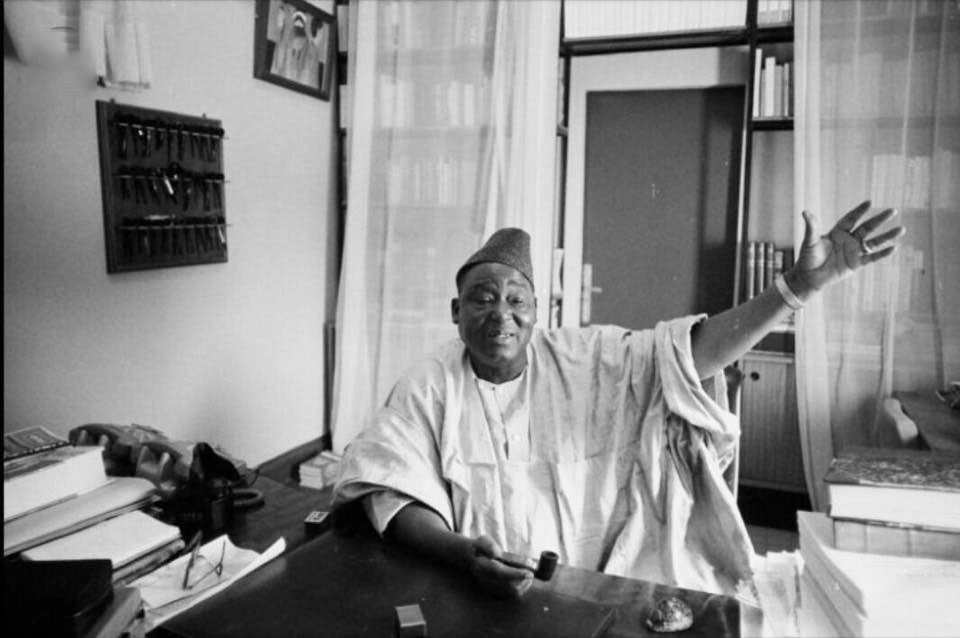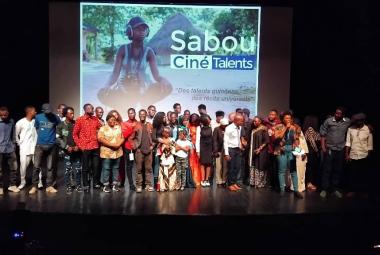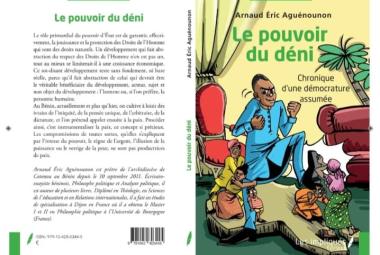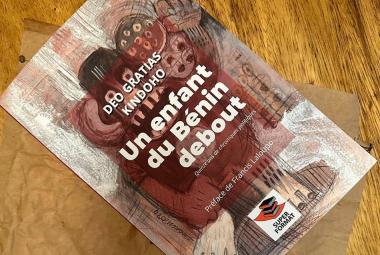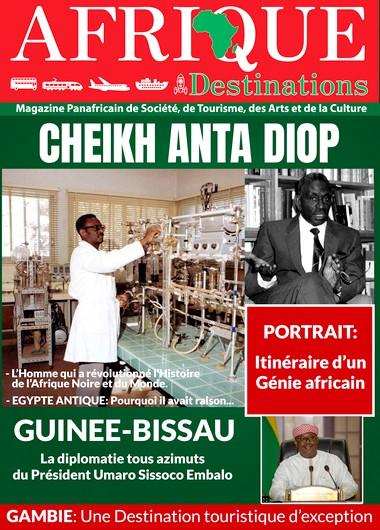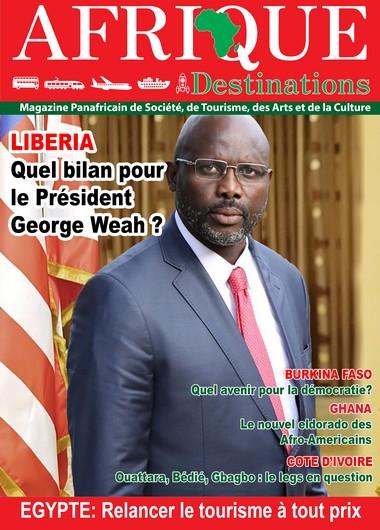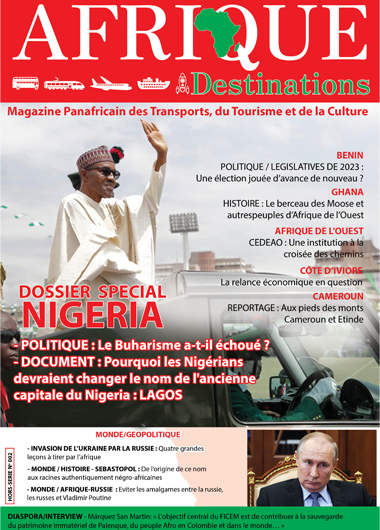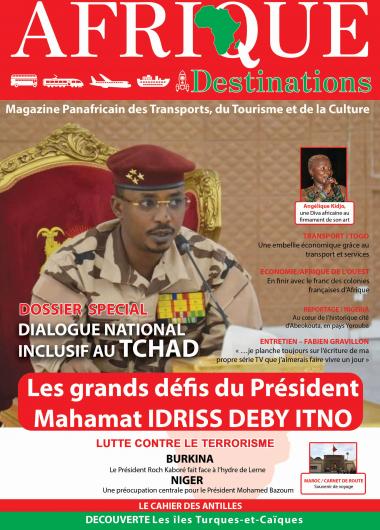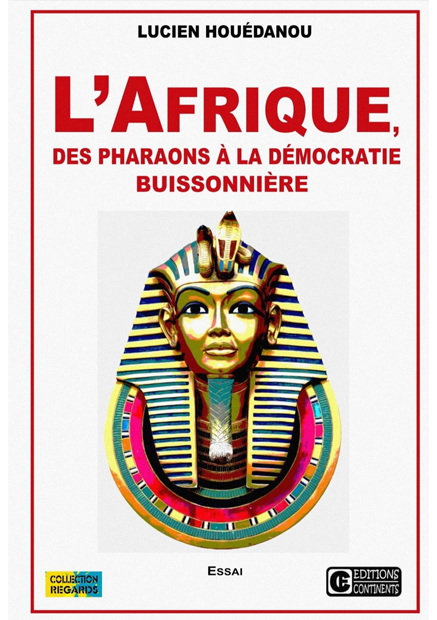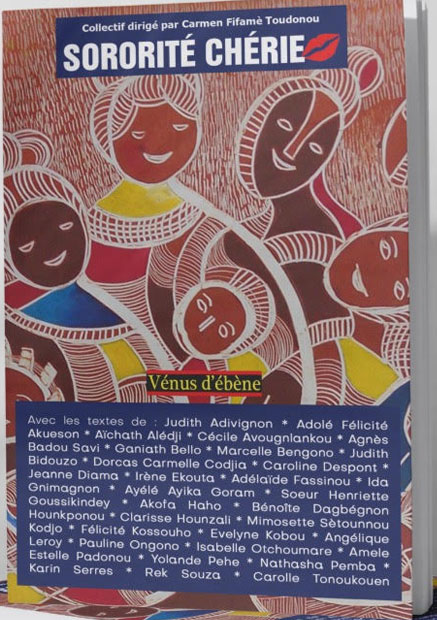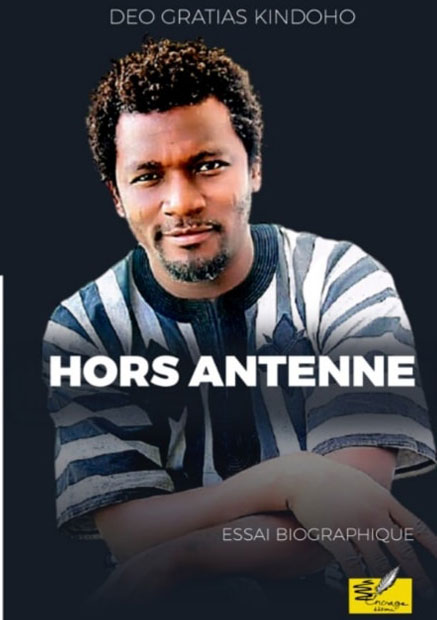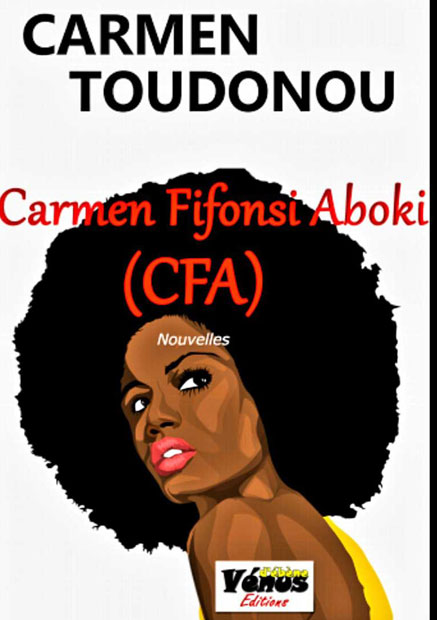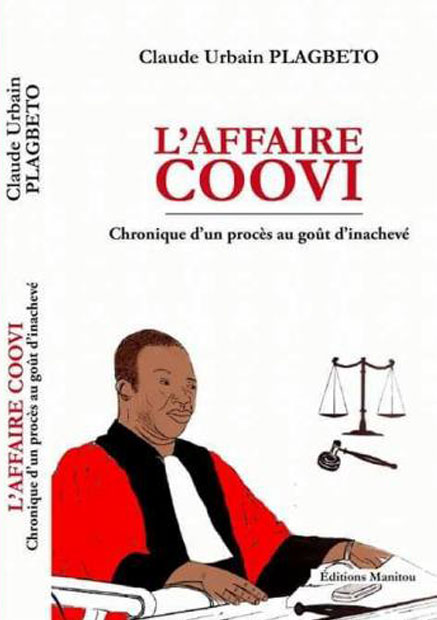Boubou Hama was an African personality with many hats. And the charisma as well as the literary production of the man who was and remains in the history of his country not only the first teacher but also the President of the National Assembly from 1958 to 1974 goes far beyond Niger and Africa.
As he liked to mention, it was in the bush of Niger that he was born. Boubou Hama was officially born in 1906, in Fonéko. Located in the west of Niger, Fonéko is like all the localities of the Songhai country of its size. Unlike many children of his age, he, who is the son of a village chief, will have a significant chance of going to school. Boubou Hama then attended the Preparatory School of Téra from 1916 to 1918. Following this preparatory stage, as his name suggests, he joined the Regional Primary School of Dori, located in what was Upper Volta of the time (now Burkina Faso). In these years of political and administrative divisions of its colonies, in this case the division of Upper Volta between Côte d'Ivoire, French Sudan (Mali) and Niger, this part found itself annexed to the Colony of Niger. His schooling will continue at the Upper Elementary School, concerning the 6th and 5th grades in Ouagadougou in Upper Volta in order to prepare for the entrance examination to the famous William Ponty Normal School in Dakar, Senegal. During the colonial era, Dakar was not only the capital of Senegal. It was also the capital of French West Africa (AOF) and seat of the Governor.
A tireless teacher
Like all the first intellectuals of the AOF and a good part of the first Presidents of the Republic of the period after independence, the capital of the AOF is a must. It is the center of Knowledge par excellence for these colonies. It was there in Dakar that he began his professional training in 1926. And, a few years later, he left there in 1929 as the first teacher in Niger. The primary objective of the colonial administration is to have both auxiliaries and as submissive as possible. Unfortunately, not everything will go as desired with Boubou Hama.
Once back in his country, Boubou Hama was first a lecturer at the Regional School of Niamey, the capital of the country. Thereafter, he will find his bush of the Sahel which he likes to evoke so much when in 1935, he is assigned to the Elementary School of Tillabéri. In contact with the field and precisely with its realities, its commitment to politics will be affirmed. Especially since, on the spot, Boubou Hama is directly confronted with the injustices that the colonial administration inflicts on the local populations, in particular in the question of land and land ownership. His commitment alongside the populations earned him the sanction of an assignment to Niamey in 1938. But that did not deter him from continuing his fight, including in the classes where he taught, to the point of arousing the ire of his superiors. In opposition to this subject with Governor Jean-François Toby, Boubou Hama was sent to the Regional School of Dori in 1945, as if to keep him away from his family. Because Governor Jean-François Toby does not appreciate what Mr. Boubou Hama is trying to instil in his learners.
A talented historian and storyteller
In addition to his role as a teacher, Boubou Hama is very involved in research, particularly in the collection of traditions and their preservation through writing, his other passion. He makes a meeting that will serve as a springboard for him to showcase his work. It is about his collaboration with the doctor of the colonial troops, Doctor Jean Boulnois whom he met in 1933 in Tillabéri. Their collaboration propels Boubou Hama to center stage. He became a major university researcher and one of the great specialists in the history of ancient Black Africa. Indeed, Doctor Jean Boulnois who has already been talked about in the world through his previous publications. Arriving in Niger, he was one of the first at that time to establish links between the Dravidian customs and beliefs of India and the customs and beliefs of the peoples of West Africa. He had indeed also officiated as a doctor of the colonial troops from 1932 to 1935 in Tamil Nadu and Bengal in India. It remained to elucidate these similarities of customs and beliefs with peoples who, a priori, had nothing in common and geographically at the antipodes.
In his book entitled Spiritualité : Pourquoi le yoga n'est pas né en Inde : les secrets des origines des Davidiens (Spirituality: Why yoga was not born in India: the secrets of the origins of the Davidians) published by Editions Complicité in Paris in 2020, Marcus Boni Teiga will confirm that Doctor Jean Boulnois was right by writing: "Some have criticized the work of J. Boulnois, Colonial doctor in French settlements in India between the wars and author of The caduceus and the Dravidian Indo-Mediterranean symbolism of the tree, the stone, the snake and of the mother goddess. But whatever conclusions he had reached in his time, he was among those who saw through the snake cults of South India the survival of the Neolithic Mother Goddess cults. and hence that of the Dravidian Civilization as the oldest civilization of India. So much so that for him, the link could be made from the outset between the Dravidians and the ancient Egyptians via the Middle East. This remains completely logical and coherent independently of its analyzes if we admit that all this great geographical space was inhabited and impregnated by the culture of peoples who shared the same substrate when we go back to more than four thousand years before Jesus -Christ. And that long, long before the arrival of the Aryans in India".
With Doctor Jean Boulnois, Boubou Hama is involved in the publication of: L'Empire de Gao : histoire, coutumes et magie des Sonraï (The Empire of Gao: history, customs and magic of the Sonraï), published in 1954 by Editions Maisonneuve and prefaced by Professor Théodore Monod.
The Nigerian historian, Boubou Hama, former President of the National Assembly of Niger, is one of the very first to mention the very probable Egyptian origin of the Proto-Moose of Diamaré. Describing the graves of these migrants and their way of dressing, he likens them to the Copts. Jean Rouch, too, thinks that the Ancestors of Songhay and Kurumay, Peul, Tuareg, Gourmantché, Hausa, Bella and Bariba come from ancient Egypt.
Boubé A. Namaïwa, writes in Croyances, ethnie et identité au Sahel, Du multiple à l’Un, Éthiopiques n°90., 1er semestre 2013 (Beliefs, ethnicity and identity in the Sahel, Du multiple à l'Un, Éthiopiques n°90., 1st semester 2013): "The first lesson which is immediately obvious is that which refers to the origins . According to the Songhai cosmogony, the ancestors of the Nabissa and the Farfarouse are said to have settled in Niger from Egypt. Their first site was the Zarmaganda, a region crossed by the Dallol Bosso. This space was already inhabited by the Babakou or Gandji Bi, indigenous black geniuses. “After a period of conflict, the Gandji Bi were driven back to the river and pushed onto its right bank, thus giving newcomers access to the river valley,” says Niger historian and archaeologist Boubé Gado. It is important to note here that this cosmogony runs counter to the ideology which, since the arrival of Islam, has imposed itself on the populations of the Niger area and which traces their genealogical trees either to the prophet of Islam or to one of his companions, in this case the Muezzin Bilal, if not quite simply to the Arabs. It happens that here we refer rather to Egypt and, as we will see, to Ethiopia for the Hausa”.
An African independence fighter
From his political commitment, Boubou Hama takes part in the struggles of the RDA (Rassemblement démocratique africain - African Democratic Rally) put on the baptismal font in 1946. The former colonies of France being in the effervescence which augurs independence, Governor Toby fires all wood to encourage parties won over to French politics. The PPN-RDA (Parti progressiste nigérien - Niger Progressive Party) in which Boubou Hama, whom he knows very well, is an activist, is kept under scrutiny. Also because of its proximity to the PCF (Parti communiste français - French Communist Party). And it was to oppose him that he set up the UNIS (l'Union des Nigériens Indépendants et Sympathisants - Union of Independent Niger people and Sympathizers). But unfortunately for him, he will not make the weight against the PPN-RDA and ends up disappearing, to the chagrin of his carriers. As for Boubou Hama, his political fight led him straight to the head of the National Assembly in December 1958 while Diori Hamani Diori, for his part, took the Presidency of the Republic under the banner of the Niger people Progressive Party (PPN). It will be necessary to wait for the April 1974 coup led by Seyni Kountché then Lieutenant-Colonel to remove him from power. Ousted, he was first kept prisoner in Agadès before being transferred to Niamey.
A deserved tribute
Boubou Hama, the man of culture, will have contributed a lot to the establishment of the National Museum, which today bears his name. The same applies to the creation of the CCFN (Centre culturel franco-nigérien - France-Niger Cultural Center) or the CELHTO (Centre d'études linguistiques et historiques par tradition orale - Center for Linguistic and Historical Studies by Oral Tradition). Throughout his life, he wrote, among other major historical works, Histoire du Niger (1965) (History of Niger (1965), Enquête sur les fondements et la genèse de l'unité africaine (1966) (Survey on the foundations and genesis of African unity (1966), Recherches sur l'histoire des Touareg sahariens et soudanais (1967) (Research on the history of the Saharan and Sudanese Tuareg (1967), L'histoire traditionnelle d'un peuple, les Zarma-Songhay (1967) ), (The traditional history of a people, the Zarma-Songhay (1967), Histoire du Gobir et de Sokoto (1967) (History of Gobir and Sokoto (1967), Kotia-Nima (1968) (Kotia-Nima (1968). For this last work, he was crowned with the Grand prix littéraire de l'Afrique noire (Great Literary Prize of Black Africa) in April 1971. And for Essai d'analyse de l'éducation africaine (1968) (Essay on the Analysis of African Education (1968), he won the Prix Léopold Sédar Senghor (Léopold Sédar Senghor Prize). Poet, philosopher, historian, man of letters and politician, Boubou Hama shone in each of these fields in which he was interested. Also, he continued to work, until his death in January 1982, to make an enormous cultural and historical contribution to Africa as a whole and in particular to West Africa.
And it is rightly so as not to let his memory fall into oblivion among the younger generations, including even in Niger Republic, that academics and researchers as well as scientific and literary organizations of the French-speaking world of which he was once a member had found it judicious to pay homage to him. Because of all this considerable work that he left as a legacy on African culture to posterity. Thus the centenary of his birth was celebrated in 2006 with this in mind.
In BOUBOU HAMA Un homme de culture nigérien (BOUBOU HAMA A man of culture from Niger), a publication dedicated to him by the seminar in March 1989, we can read in Etudes Africaines (African Studies), under the direction of Diouldé Laya, J.D. Pénel, Boubé Namaïwa: “However, in 1989, a daring attempt of the Director of Culture at the time, Inoussa Ousséïni, created a change of attitude, an awakening, by the official organization of a two-day seminar in March and by the creation of a Boubou Hama Prize (endowed with one million CFA francs) awarded by the Ministry of Culture. However, despite the audacity of the gesture in favor of the deceased, the echo of the seminar did not last so long; as for the Boubou Hama Prize, awarded every two years, it ends up disappearing after a few editions. To this first wave of official efforts to restore his true place to this man of culture, it is appropriate to add a certain publishing activity and academic work which, after his death in 1982 and for a period of twenty-five years, will maintain, despite everything, the embers of memory and will manifest fragments of the work, so considerable and still, in large part, unpublished "...
Because of all he has accomplished for his country, Niger Republic, as well as for his continent, Africa, Boubou Hama should remain as a beacon in the collective memory. It is up to those who are responsible for this mission to work in this logic to ensure that this lighthouse never goes out.
By Tcha Sakaro



